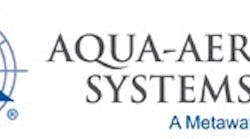Over the past 20 years, several new businesses have established themselves in Talladega, Ala., and several existing businesses have expanded. This economic growth prompted the city to undertake major upgrades to its water and sewer infrastructure to accommodate its increase in customers.
In addition to serving city residents and businesses, Talladega Water & Sewer Div. provides water to the nearby communities of Waldo and Lincoln, as well as the Talladega Superspeedway, a NASCAR racetrack. The division currently operates three wastewater treatment facilities located across the city and county. The facilities incorporate physical, chemical, biological and filtration treatment methods.
In December 2015, Talladega underwent an upgrade to its tertiary filtration method to comply with effluent total suspended solids (TSS) requirements. It replaced two microscreen filters that had a capacity of 12 million gal per day (mgd) with two eight-disk Aqua MegaDisk filters that utilize OptiFiber PES-14 pile cloth media. The microscreen filters were no longer serviceable due to plugging and leaking of solids. Talladega opted to upgrade with pile cloth media filters instead of new microscreen filters.
The Filter Process
Clarified effluent from the trickling filter system enters the filters and flows by gravity through the cloth media of the stationary hollow disks. The filtrate exits through the hollow shaft, which supports the individual disks, and flows to the effluent channel. As solids accumulate on the surface of the media, the water level surrounding the disks rises. Once a predetermined level is reached, the disks rotate and the media surface is automatically vacuum backwashed clean. Heavier solids settle to the bottom of the tank and then are pumped to a digester or to the plant headworks.
Design Characteristics
The two eight-disk filters are capable of treating 16 mgd—double the city’s current peak flow capacity. Each vertically oriented disk is 10 ft in diameter with eight removable segments for ease of installation and maintenance.
The filters are preceded by a trickling filter biological treatment and followed by chlorine disinfection. Water then is de-chlorinated and discharged into the receiving stream.
Improvements
The Aqua MegaDisk provides the city several advantages. It requires fewer filters, resulting in a smaller footprint and lower capital and operating costs. Its eight lightweight removable disk segments offer ease of maintenance. By requiring fewer pumps and valves, maintenance costs are lowered. Its stationary disks (except when backwashing) result in low energy consumption. The vertically oriented disks also reduce required footprint.
It has higher solids and hydraulic loading rates, utilizes engineered OptiFiber cloth filtration media, produces consistent reuse-quality effluent, tolerates extreme variations in load, and eliminates sand media and underdrains. Its backwash system fluidizes fibers for efficient release of stored solids, and the low backwash volume results in water savings and energy reduction. Finally, it is available in painted steel, stainless steel or concrete tanks.
This upgrade easily retrofitted into existing tankage and hydraulic profile, which saved space and cost. It also increased capacity by 4 mgd; eliminated separate backwash source due to vacuum backwash of the cloth media; and offered readily available parts and minimal maintenance. In addition, its high turbidity and TSS removal will improve disinfection for meeting permit requirements.
The Aqua MegaDisk filters will easily accommodate future growth of the city without additional equipment or footprint and will meet increased permit requirements.



